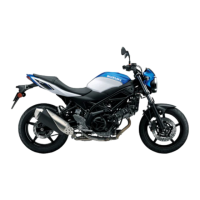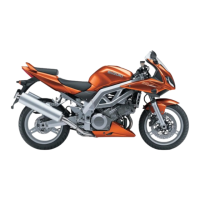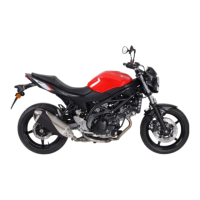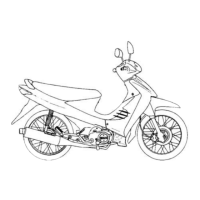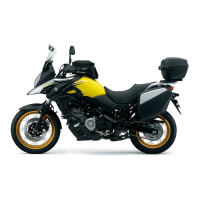3. Let battery stand for at least 30 minutes.
Move or gently tap the battery so that any air bubbles
between the plates will be expelled. If acid level has
fallen, refill with acid to upper level. Note: this is the
last time electrolyte should be added, but distilled water
should be added as required.
4. A battery must be completely charged before
installation. Charge for three to five hours at the current
equivalent of 1/10 of its rated capacity found in the
Yuasa Applications Book.
5. During charging, batteries can spit electrolyte out
the open vent. Take care to loosely refit vent caps.
6. Check during
charging to see if
electrolyte level has
fallen, and if so, fill
with distilled or clean
water to the UPPER
LEVEL. After adding
water, charge for
another hour at same
rate as above to mix
water and acid.
7. When charging’s done, replace plugs
firmly. Do not apply excessive pressure.
Finger tighten only. Do not over-tighten.
8. Wash off spilled acid with water and baking soda
solution, paying particular attention that any acid is
washed off the terminals. Dry the battery case.
Battery Activation for Conventional and YuMicron Types
Sealed at the factory, a new YUASA battery has an
indefinite shelf life as long as it remains sealed, with
the red cap in place, and is stored at room tempera-
ture. Once it’s unsealed, a battery should be activated,
charged and installed. The plates of an unsealed,
uncharged battery begin to oxidize. That makes it
more difficult to charge later. (We talk more about
sulfation later in this book.) And if it’s charged and sits
around, it starts to discharge and sulfate; how fast
depends on temperature.
Here are the steps for activating most batteries,
including YUASA’s Conventional, YuMicron, YuMicron
CX. (Sealed VRLA – YT or YI – batteries are activated
differently, see page 25.)
Activating Standard Batteries
1. Right before adding electrolyte, remove
filling plugs. Also remove the sealing tube – the red
cap – and throw it away. (Putting this cap back on after
the battery’s filled with acid can cause an explosion.)
2. Place battery on a
level surface. Fill battery
with electrolyte (a sulfuric
acid dilution with a specific
gravity of 1.265). Do not
use water or any other liquid
to activate.
Electrolyte should be between 60°F and 86°F before
filling. Fill to UPPER LEVEL as indicated on battery.
NOTE: Never activate a battery on the vehicle.
Electrolyte spillage can cause damage.
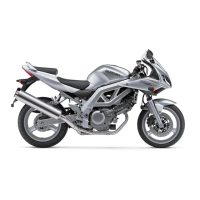
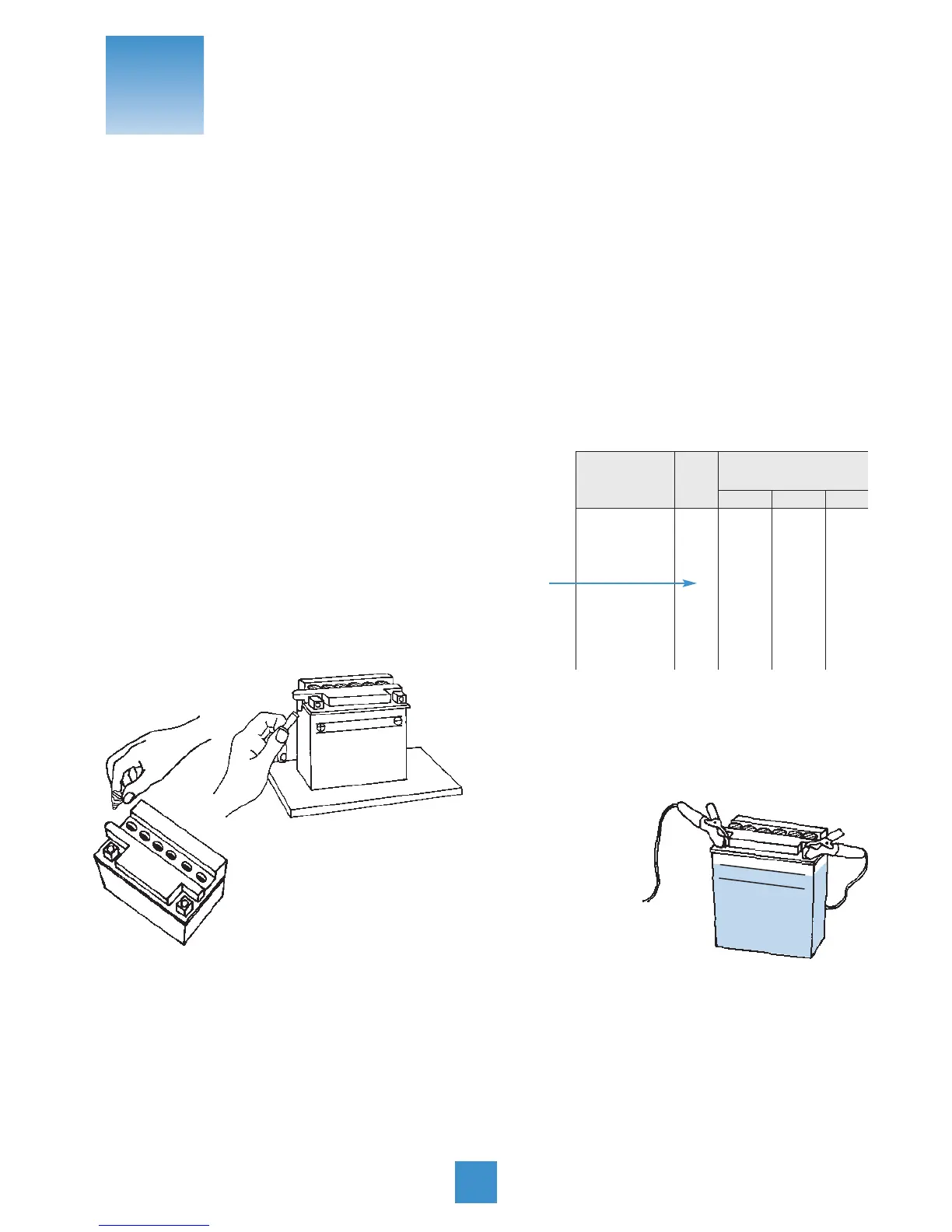